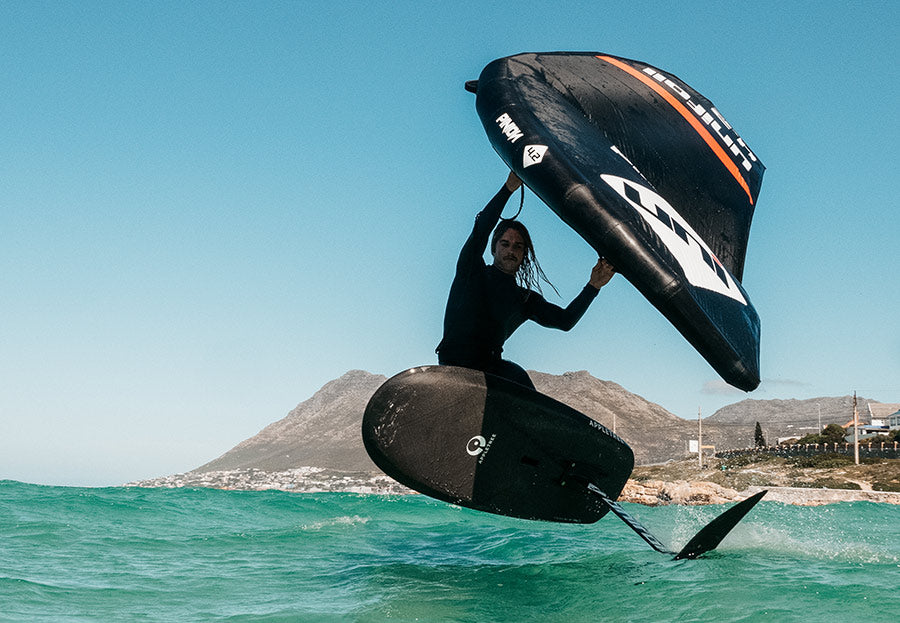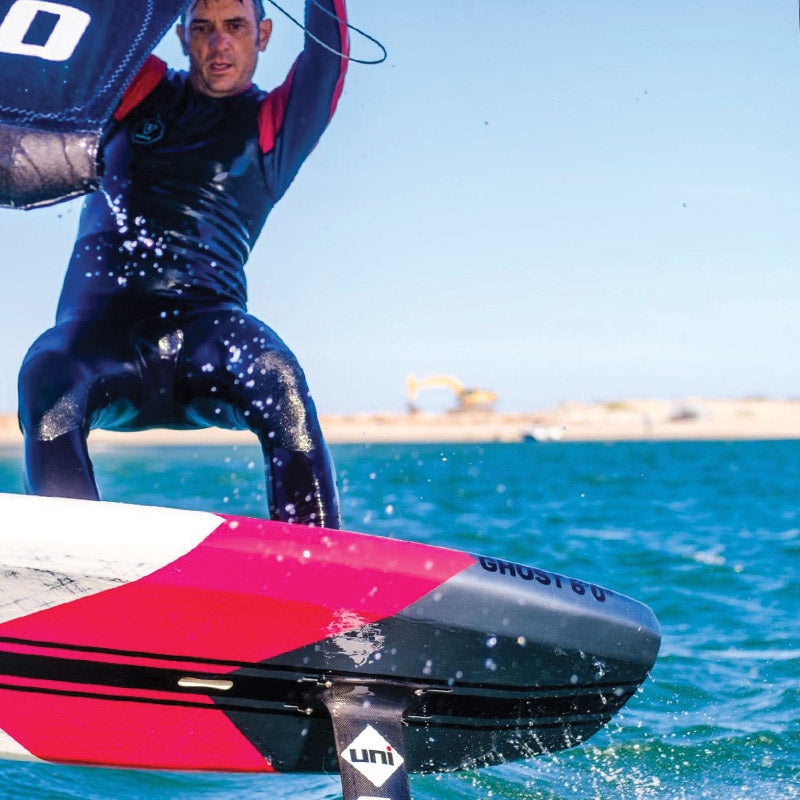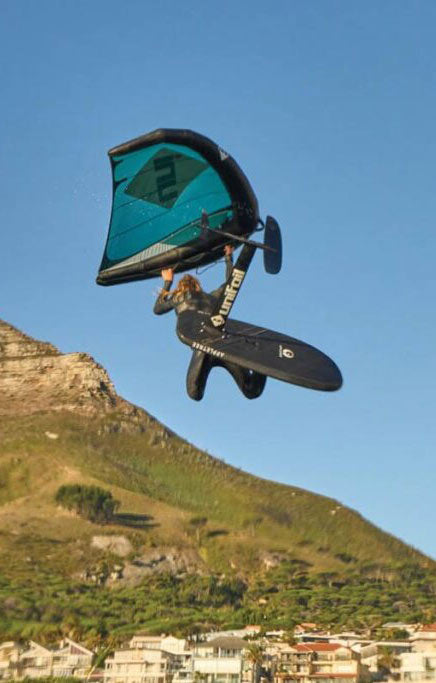
What foil is right for me?
Winging
Consider what type of conditions you will be riding in and your level of progression.
Novice
If you are a novice then you will want a foil that gets going early, is easy to ride and stable underfoot. You will be starting on a higher volume board, with a smaller wing, so your foil needs to be large enough to get you up with less power in the wing.
For lighter riders we recommend the 170 Vyper and for heavier riders the 190 Vyper.
Designed to perform in the surf, the Vyper has become a favourite with wingers. It’s a mid-aspect wing with an aspect ratio (AR) of 6:1, that means it has a deep chord (distance from leading to trailing edge) providing early lift and stability in chop. Its narrow wingspan makes it easy to turn and its rounded wingtips make it a safer choice for learners.

Intermediate
Once you are getting on foil easily and making gybes and tacks you are ready to progress to a smaller front wing.
A smaller wing will have less drag through the water, allowing you to go faster and prevent breaching (when the foil aerates and loses lift – usually resulting in a
stall).
Now it’s time to think about which disciplines you want to focus on.
Freeride: You just want to have fun and enjoy the freedom of riding in a range of conditions. A balance of glide and turning ability are what you want in your foil. Mid-aspect/ High Aspect.
Waves: You want a foil that is easy to control, predictable and stable. You are going to be focussed 100% on riding the wave; you don’t have time to think about what your foil is doing. Mid-aspect.
Freestyle: This is all about getting your foil out of the water: jumps, loops, rotations. A foil that gets going quickly, recovers from jumps easily, and has a narrower span for control and safety. The wider spans on high-aspect foils and their pointed tips make them unforgiving for this discipline.
A note on high aspect (HA) foil wings: While their wider span makes them more difficult to turn, the massive lift they create and their speed through the water makes them a popular choice for a lot of riders, even in conditions to which they are not obviously well-suited. Why is this?
Smaller HA foils, that is those under 1,000 cm. Sq. can be incredibly efficient, offering much faster speeds than mid-aspect wings, but with the added benefit of being more agile than their larger counterparts.
However, to get going on these wings requires more skill and often a larger hand-wing size.
Downwind: Here you want a front wing with the maximum glide. You will be looking for bumps to ride and focusing on riding the foil.

Wind Wing
Disciplines:
Progression: Early planing, maximum lift at low-speed, stability
Waves: Early lift, turning radius, stability, speed, safety
Freestyle: Easy lift, turning radius, stability, pop (flat water jumping), safety
Freeride: Early lift, glide, speed, stability, safety
Downwind: Maximum glide and speed, turning less important
Conditions:
Flat water: best for learning. Focus on getting on foil (planing), sailing in both directions, gybing and tacking.
Waves: Ideal conditions are either cross-shore wind or onshore where there is a launch spot that takes you out past the waves.
More advanced riders also like offshore winds for cleaner wave faces but this adds risk of not being able to get back to shore easily as the wind will take you out to sea.
Mid-aspect foils with narrower span are easier to handle in waves, they are more stable, they have more rounded, blunter tips which are less likely to tear a wind wing if they touch it. They provide more drive on the wave and better recovery for breaches and stalls.
In the surf you have less time to get going between waves and greater consequences for mistakes, so early lift and predictable handling aree key.
Freestyle: Flat water, pop for jumps, stability for landings, easy lift for recovery in stalls and breaches.
Quick checklist
For learning: mid-aspect, narrow span (6:1)
For waves & freestyle: mid-aspect, narrow span (6:1)
For freeride and downwind: high-aspect, high speed, wide span (8:1)
